
Journal Menu
► ▼ Journal Menu-
- Nanomaterials Home
- Aims & Scope
- Editorial Board
- Reviewer Board
- Topical Advisory Panel
- Instructions for Authors
- Special Issues
- Topics
- Sections & Collections
- Article Processing Charge
- Indexing & Archiving
- Editor’s Choice Articles
- Most Cited & Viewed
- Journal Statistics
- Journal History
- Journal Awards
- Society Collaborations
- Conferences
- Editorial Office
Journal Browser
► ▼ Journal BrowserNeed Help?
Announcements
27 December 2024
Prof. Dr. Tierui Zhang Appointed Associate Editor of Section “Energy and Catalysis” in Nanomaterials

We are pleased to announce that Prof. Dr. Tierui Zhang has been appointed Associate Editor of Section “Energy and Catalysis” in Nanomaterials (ISSN: 2079-4991).
Name: Prof. Dr. Tierui Zhang
Affiliation: Key Laboratory of Photochemical Conversion and Optoelectronic, Materials, Technical Institute of Physics and Chemistry, Chinese Academy of Sciences, Beijing 100190, China
Interests: chemistry; photocatalysts; cyanogen; graphitic carbon nitride; carbon dioxide; electrocatalysts; chemical reduction
Website: https://people.ucas.edu.cn/~0010912?language=en
Prof. Dr. Tierui Zhang is a distinguished researcher and doctoral supervisor at the Technical Institute of Physics and Chemistry, Chinese Academy of Sciences (CAS), and the director of the Key Laboratory of Photochemical Conversion and Optoelectronic Materials, Chinese Academy of Sciences. He is a fellow of the Chinese Chemical Society, a fellow of the Royal Society of Chemistry, and has been continuously selected as a Highly Cited Researcher by Clarivate Analytics from 2018 to 2024. Dr. Zhang received his bachelor’s degree in chemistry and a Ph.D. in organic chemistry from Jilin University. He subsequently conducted postdoctoral research in Germany, Canada, and the United States. At the end of 2009, he returned to China and was appointed at the Technical Institute of Physics and Chemistry, Chinese Academy of Sciences.
He has published over 360 SCI papers in journals such as Nat. Catal., Nat. Commun., Adv. Mater., Angew. Chem. Int. Ed., and J. Am. Chem. Soc., with more than 40,000 citations and an h-index of 116, and has been granted 59 national invention patents. He is the key project leader of the National Natural Science Foundation of China’s “National Outstanding Youth Science Fund”, Science Fund for Creative Research Groups, Key Project, and International Cooperation and Exchanges, as well as the chief scientist of key special projects under the National Key Research and Development Program of China. Additionally, he is the lead of The Royal Society Newton Advanced Fellowship. He has received several awards, including the Special Prize of the Science and Technology Award from the Chinese Society for Imaging Science and Technology (first contributor, 2021) and the Nano Materials Science Awards (2023). He serves as the associate editor of Science Bulletin, Industrial Chemistry & Materials, and Nano Research Energy, and is on the editorial boards of Advanced Energy Materials and Advanced Science. Currently, he holds academic positions as the secretary-general of the Energy Chemistry Committee of the Chinese Chemical Society, chairman of the Photocatalysis Committee of the Chinese Society for Imaging Science and Technology, and vice-chairman of the Photochemistry Committee of the China Renewable Energy Society.
The following is a short Q&A with Prof. Dr. Tierui Zhang, who shared his views of the research area, as well as his vision for the journal with us:
1. From your research experience and publication history, it appears that you have been dedicated to the field of catalysis for nearly two decades. Could you share your journey with us? What do you think are the current research hotspots in photocatalysis and energy catalysis?
Since returning to China in 2009 and joining the Technical Institute of Physics and Chemistry, Chinese Academy of Sciences (CAS), I began my research in photocatalysis. The predecessor of the Technical Institute of Physics and Chemistry, CAS, was the Institute of Sensitized Chemistry, which is renowned as one of the six major international centers for photochemistry. By combining my expertise in nanomaterial synthesis with the institute’s strengths in photochemistry, I gradually established a distinctive research direction focused on the photochemical conversion of resource small molecules driven by solar energy.
In the coming decade, catalytic reactions driven by renewable energy sources such as photocatalysis will continue to be a key focus in the fields of energy and environmental catalysis. Among these, the characterization and precise control of the surface and interface structures of catalytic materials at the atomic scale, as well as the design and scale-up integration of high-throughput photoreactors, are expected to receive more attention and may become emerging hotspots in catalysis research.
2. What are your expectations and wishes for the “Energy and Catalysis” Section of the Nanomaterials journal?
Nanomaterials, as a professional journal in the field of materials science that has been published for more than ten years, has featured a large number of high-quality original research findings. I hope that the “Energy and Catalysis” Section can fully leverage the radiating and leading role of energy and catalysis within the broader fields of chemistry and materials science. This Section should attract outstanding research teams from around the world, gathering the latest significant achievements in this area.
I will work together with the editorial team to make this Section a breakthrough point for enhancing the journal’s impact, aiming to transform Nanomaterials into a more recognized and prestigious journal in the field of energy and catalysis. Our goal is to elevate Nanomaterials to a leading position in the materials science community, particularly in the areas of energy and catalysis.
We warmly welcome Prof. Dr. Tierui Zhang and wish him every success in the position.
19 December 2024
Interview with Dr. Luis Cunha—Nanomaterials Exceptional Reviewer
|
|
Name: Dr. Luis Cunha Affiliation: Center of Physics of the Universities of Minho and Porto (CF-UM-UP), Laboratory for Materials and Emergent Technologies (LAPMET), Physics Department, University of Minho, Gualtar Campus, 4710-057 Braga, Portugal |
The following is a short interview with Dr. Luis Cunha:
1. Could you briefly introduce yourself to the readers? What are you currently researching, and why did you choose this research field?
I am a physicist, and my field of expertise is material science, focusing on experimental work. My students handle most of the hands-on lab work, but I continue to guide the research and oversee the projects. My primary focus is on producing thin films to coat materials for various applications. We primarily use magnetron sputtering as a way to produce films. The physical properties of these films are characterized and then, their effectiveness is tested for real-world applications.
Currently, I am leading a project funded by the Portugues Foundation for Science and Technology in which one of the consortium members is a branch of the largest Portuguese cork company (Amorim group). Our research aims to coat cork to enhance its durability and protect it from ultraviolet radiation, mechanical wear, and other environmental factors. Nowadays, cork is widely used for various products, from wine stoppers to bags, shoes, and dresses, and is even used in aerospace. However, as a soft material, it has some limitations, such as wear and discoloration when exposed to UV light. The goal of this ongoing project is to produce a transparent thin film that can protect the cork from aging without altering its natural appearance. Note: Portugal is the world’s largest producer and exporter of cork, making this project highly significant.
2. Which qualities do you think young researchers need?
Passion is essential. If you love what you are doing, it is much easier to stay motivated and overcome challenges. Curiosity is another crucial trait. You must be proactive in your work, not just wait for someone to ask you to explore something. If you are passionate, curious, and proactive, you are on the right path to becoming a good scientist. Research is tough, and the competition is fierce, but if you have the drive, you will succeed. Young researchers should also aim to be in a good research center if possible, but you need to keep fighting for that place. It is all about being serious in your work and persevering.
3. What do you think young researchers can learn from participating in conferences?
Conferences are very important for young researchers. They provide an opportunity to present their work, connect with others in related fields, and receive valuable feedback. It is a chance to exchange ideas and even discuss potential collaborations. My Ph.D. students have presented their work at several conferences, and we have received a lot of insightful feedback from other researchers. This helped them to improve their communication skills and broaden their networks. There is always someone at a conference who will offer you a suggestion or new perspectives on your research. I personally do not like online conferences; they lack the personal connection that in-person events offer. Face-to-face interaction is critical for building strong relationships and advancing scientific collaboration.
4. What qualities or characteristics define an effective and reliable peer reviewer in your opinion?
Firstly, they must have a deep understanding of the subject matter, ensuring that they can critically evaluate the research’s methodology, results, and significance. Attention to detail is crucial, as it allows the reviewer to identify any errors, inconsistencies, or areas needing clarification. Objectivity and impartiality are also essential traits, as a good reviewer must provide unbiased feedback, free from personal or professional biases. They should also be constructive in their criticism, offering suggestions for improvement rather than just pointing out flaws. This helps authors enhance the quality of their work. Timeliness is another important characteristic. A reliable reviewer respects deadlines and understands the importance of timely publication in the academic community. A good reviewer articulates their feedback clearly and concisely, ensuring that authors understand their comments and can act upon them.
We would like to express our sincere appreciation to Dr. Luis Cunha and all the other reviewers who have generously volunteered their time and expertise to assist in Nanomaterials’ peer review process. Their dedication and attention to detail in evaluating manuscripts, offering valuable feedback, and contributing to academic rigor are truly commendable.
17 December 2024
Over 100 German Universities Partner with MDPI in New National Agreement

More than 100 German universities and research institutions have entered into a national agreement with MDPI. The publication agreement negotiated by ZB MED comes into effect on 1 January 2025 and is valid until the end of 2026. Joining the consortium is still possible until the beginning of 2025. We are delighted by the high level of interest this agreement has already garnered, reflecting the strong demand for accessible and cost-effective open access publishing solutions among German research institutions.
This new cooperation aims to make scientific gold open access publishing more affordable and less administratively burdensome for researchers in Germany. The agreement includes substantial discounts on article processing charges (APCs) for corresponding authors from participating institutions. It offers flexible payment options, including centralized invoicing or individual payment of fees by researchers or their institutions. Additionally, the agreement features a flat-fee model that enables institutions to precisely plan expenses and optimize their library budgets.
"MDPI can look back on over a decade of successful partnerships with German research institutions," says Peter Roth, MDPI Head of Publishing. "The new agreement marks another milestone in the long-standing co-operation between MDPI and the German scientific community. It emphasizes our commitment to developing up-to-date and inventive solutions for the diverse needs of scientific institutions to promote open research for the benefit of researchers."
Petra Labriga, Head of Strategic License Management at ZB MED, highlighted the agreement's significance: "As one of the world's leading Gold OA publishers, MDPI plays a central role in the German publishing landscape. We are particularly pleased that we were able to achieve considerable potential cost savings for scientific institutions and their authors at a national level through our negotiations."
The partnership reflects a common goal of advancing the idea of open access and supporting researchers in making their scientific excellence internationally visible.
"We would like to thank the ZB MED consortium team for their excellent collaboration," added Adrian Stefan Zamfir, MDPI Institutional Partnership Manager for the DACH region. "We are delighted that this agreement will give even more researchers in Germany access to our tried-and-tested and reliable publication platform."

Franziska Fischer (right), Commercial Director at ZB MED, an Peter Roth (left), Head of Publishing at MDPI, celebrate the signing of the new national open access agreement between MDPI and the ZB MED Consortium.

More Information
Contact
- ZB MED: Team Konsortiallizenzen (konsortiallizenzen@zbmed.de) - Website
MDPI: Adrian Stefan Zamfir, Institutional Partnership Manager (zamfir@mdpi.com)
About ZB MED
ZB MED - Information Centre for Life Sciences is an infrastructure and research centre for life science information and data. Its aim is to support and strengthen research for people and the environment: from medicine to biodiversity and environmental protection.
The work of ZB MED is orientated towards the strategic guidelines:
- Research + Networking: We conduct research together with the regionally, nationally, European and globally networked research community.
- Data science: We enable data analyses and generate new knowledge through research.
- Access to information: We provide sustainable access to information, literature and data as a central information infrastructure.
- Open + FAIR: We promote open and reproducible science in line with open science and FAIR principles.
- Knowledge and skills transfer: We actively impart knowledge, competences and skills.
More information at www.zbmed.de.
About MDPI
Headquartered in Basel, Switzerland, MDPI is one of the world's leading open access publishers with a current portfolio of more than 440 journals in all scientific disciplines. MDPI‘s goal is to advance open science worldwide through greater transparency, efficiency and collaboration. To date, more than 3.7 million researchers have published their results in MDPI journals. The editorial process is overseen by a large network of dedicated reviewers and editors and supported by more than 6500 MDPI employees. MDPI currently works with over 800 academic institutions and 180 scientific societies worldwide, which benefit from a wide range of MDPI services and products.
17 December 2024
Article Layout and Template Revised for Future Volumes
We are pleased to announce a series of updates to our template, aimed at improving the readability and overall aesthetics of our publications. These changes have been meticulously designed to enhance the user experience and ensure consistency across all our publications. The updated template will be available for download from the Instructions for Authors page.
The following updates will be applied to articles published in the 2025 volumes, starting on 24 December 2024:
- Main text: The line spacing has been increased to improve the readability of publications;
- Header and footer: The link to the journal website will be removed, as a hyperlink has been integrated into the journal logo. Additionally, the DOI link will be moved from the left-hand side to the right-hand side, and both the header and footer will be slightly raised to achieve a better balance;
- Left information bar: The information provided here has been rearranged for better organization; the CC-BY logo will be removed;
- Font size: The font size used for the abstract, keywords, and first-level headings will be increased.
Furthermore, MDPI journals will continue to use article numbers. This approach enables us to maintain a rapid and efficient production process by being able to define pagination as soon as a paper is accepted.
We hope that the new version of the template will provide users with a better experience and make the process more convenient.
Please contact production@mdpi.com if you have any questions or suggestions.
14 December 2024
Editorial Board Members from Nanomaterials Featured in the Highly Cited Researchers 2024 List Published by Clarivate

On 19 November 2024, ClarivateTM announced the 2024 Highly Cited Researchers. It is our pleasure to announce that forty Nanomaterials (ISSN: 2079-4991) Editorial Board Members have been listed as 2024 highly cited researchers by Clarivate. We wish to take this opportunity to express our gratitude for the immense impact these researchers have had on scientific progress in the field, as well as on the development of our journal.
|
Name |
Category |
Affiliation |
|
Anasori, Babak |
Materials Science |
Purdue University, United States |
|
Bando, Yoshio |
Materials Science |
King Saud University, Saudi Arabia |
|
Cao, Guozhong |
Cross-Field |
University of Washington Seattle, United States |
|
Chen, Shuangming |
Chemistry |
University of Science & Technology of China CAS, China Mainland |
|
Chen, Xiangyu |
Cross-Field |
Chinese Academy of Sciences, China Mainland |
|
Crommie, Michael F. |
Cross-Field |
Lawrence Berkeley National Laboratory, United States |
|
Du, Yonghua |
Chemistry |
Brookhaven National Laboratory, United States |
|
Gao, Junkuo |
Cross-Field |
Zhejiang Sci-Tech University, China Mainland |
|
Gu, Zhanjun |
Cross-Field |
Chinese Academy of Sciences, China Mainland |
|
He, Jiaqing |
Cross-Field |
Southern University of Science & Technology, China Mainland |
|
He, Ping |
Cross-Field |
Nanjing University, China Mainland |
|
Hu, Wenbin |
Materials Science |
Tianjin University, China Mainland |
|
Jelezko, Fedor |
Physics |
Ulm University, Germany |
|
Ji, Xiaoyuan |
Cross-Field |
Tianjin University, China Mainland |
|
Jiang, Lei |
Chemistry; Cross-Field; Materials Science |
University of Technology Sydney, Australia |
|
Jin, Zhong |
Cross-Field |
Nanjing University, China Mainland |
|
Kang, Zhenhui |
Cross-Field |
Soochow University, China, China Mainland |
|
Liang, Hanfeng |
Cross-Field |
Xiamen University, China Mainland |
|
Lin, Jun |
Materials Science |
Chinese Academy of Sciences, China Mainland |
|
Pan, Anlian |
Cross-Field |
Hunan University, China Mainland |
|
Saliba, Michael |
Environment and Ecology |
University of Stuttgart, Germany |
|
Shao, Zongping |
Chemistry; Materials Science |
Curtin University, Australia |
|
Shi, Yi |
Cross-Field |
Nanjing University, China Mainland |
|
Shin, Su Ryon |
Cross-Field |
Harvard Medical School, United States |
|
Sun, Zaicheng |
Cross-Field |
Beijing University of Technology, China Mainland |
|
Tang, Yawen |
Cross-Field |
Nanjing Normal University, China Mainland |
|
Wang, Lianzhou |
Materials Science |
University of Queensland, Australia |
|
Wang, Zhiyu |
Cross-Field |
Dalian University of Technology, China Mainland |
|
Wei, Zhixiang |
Materials Science |
National Center for Nanoscience & Technology CAS, China Mainland |
|
Wu, Zhong-Shuai |
Cross-Field |
Chinese Academy of Sciences, China Mainland |
|
Xia, Yongyao |
Cross-Field |
Fudan University, China Mainland |
|
Xing, Wei |
Chemistry |
Chinese Academy of Sciences, China Mainland |
|
Zhai, Tianyou |
Cross-Field |
Huazhong University of Science & Technology, China Mainland |
|
Zhang, Tierui |
Chemistry; Materials Science |
Chinese Academy of Sciences, China Mainland |
|
Zhang, Wenjun |
Cross-Field |
City University of Hong Kong, Hong Kong |
|
Zhao, Biao |
Cross-Field |
Fudan University, China Mainland |
|
Zheng, Weitao |
Cross-Field |
Jilin University, China Mainland |
|
Zhou, Weijia |
Cross-Field |
University of Jinan, China Mainland |
|
Zhu, Yongfa |
Chemistry |
Tsinghua University, China Mainland |
|
Zou, Guoqiang |
Cross-Field |
Central South University, China Mainland |
To encourage further cooperation with excellent scholars from all around the world, we welcome you to contribute your excellent work to our journal. If you have any proposals for Special Issues, please contact us. Your support would be highly appreciated.
Additionally, we would like to share with you the Editor’s Choice Articles of Nanomaterials. You are welcome to share and recommend these papers within your community.
11 December 2024
Prof. Dr. Meissam Noroozifar Appointed Associate Editor of Section “Energy and Catalysis” in Nanomaterials
We are pleased to announce that Prof. Dr. Meissam Noroozifar has been appointed Associate Editor of the Section “Energy and Catalysis” in Nanomaterials (ISSN: 2079-4991). With an extensive background in scientific research and publishing, he will bring a wealth of knowledge and expertise to this role.
|
|
Name: Meissam Noroozifar
|
Prof. Dr. Meissam Noroozifar is a distinguished researcher with over 20 years of experience in chemistry, applied chemistry, and engineering. He has authored more than 250 peer-reviewed articles in top journals, including Advanced Energy Materials, Applied Catalysis B: Environmental, Journal of Materials Chemistry A, ACS Applied Energy Materials, and the International Journal of Hydrogen Energy. His research covers a broad spectrum of topics, such as nanocatalysts, metallic and bimetallic aerogels, energy systems, and electrochemical sensors, with applications in alternative power sources, batteries, and fuel cells, including direct alcoholic (hydrogen) fuel cells and biofuel cells. He is internationally recognized for his expertise in electrochemical techniques, advanced instrumentation, and spectroscopy, and his contributions to advancements in energy storage, fuel cells, and environmental chemistry and health. His work bridges fundamental science with practical applications, leading to the development of innovative technologies that address critical challenges in sustainability and health. Actively fostering international collaborations, he drives research that leads to groundbreaking advancements and the creation of methodologies with far-reaching applications. These contributions have earned him recognition among the World Top 2% Scientists by Stanford University and Elsevier, as well as the World Top 3% of Scientists based on the AD Scientific Index, particularly in chemistry, energy, and environmental chemistry.
The following is a short Q&A with Prof. Dr. Meissam Noroozifar, who shared his vision for the journal with us, as well as his views on the research area:
1. What motivated you to assume the role of Section Associate Editor for this journal?
I was motivated to assume the role of Section Associate Editor for the journal of Nanomaterials because of my strong commitment to advancing research in nanomaterials and their diverse applications in areas such as energy and catalysis. Over the years, I have witnessed the transformative potential of nanomaterials, and I believe that this journal provides an excellent platform for sharing groundbreaking research in these fields. As someone with extensive experience in nanotechnology, particularly in the development of novel nanocatalysts and energy storage materials, I am eager to contribute to shaping the future of nanomaterial research by ensuring that high-quality, innovative, and impactful research is published. The opportunity to work alongside leading experts in the field allows me to stay at the forefront of advancements while also fostering the development of emerging researchers and cutting-edge technologies. I am particularly excited about the opportunity to help facilitate the dissemination of research that addresses global challenges, such as sustainability and health, which aligns with my own academic and professional interests.
2. How do you envision the evolution of this research field in the coming years?
I envision the field of nanomaterials evolving in several exciting directions over the next few years, driven by advances in both material science and interdisciplinary research. First, I expect to see significant progress in the development of more sustainable and efficient nanomaterials, particularly for energy and environmental applications. As the global push for clean energy intensifies, nanomaterials will continue to play a crucial role in the development of next-generation batteries, fuel cells, and solar technologies, with a focus on improving performance, reducing costs, and increasing recyclability. I foresee an increasing convergence of nanomaterials with artificial intelligence and machine learning. These technologies will enable more precise design and optimization of nanomaterials, accelerating their development and application in real-world scenarios. This integration will likely lead to smarter, self-assembling, and multifunctional materials that can adapt to environmental changes or user needs. Overall, the next few years will witness a deeper integration of nanomaterials into industries ranging from energy to environmental applications, with a growing emphasis on sustainability, performance, and integration with digital technologies. As the demand for more efficient and eco-friendly solutions continues to rise, nanomaterials will play a key role in advancing energy storage systems, renewable energy technologies, and pollution control measures, paving the way for more sustainable and innovative industrial processes.
3. What are your thoughts on the progress of the open access model within the publishing realm?
The progress of open access within the publishing realm has been remarkable, and I firmly believe it is reshaping the way scientific knowledge is shared and disseminated. Open access provides an invaluable platform for researchers, especially those in underfunded institutions or developing regions, to share their findings with a global audience. By removing paywalls, it democratizes access to cutting-edge research, enabling a broader range of scientists, policymakers, and the public to engage with the latest advancements. One of the most exciting developments in open access is the growing number of high-quality journals embracing this model. As more publishers adopt open access, there is an increased emphasis on maintaining rigorous peer review processes and ensuring that the quality of published content remains high. This has allowed the open access model to become a viable alternative to traditional subscription-based publishing, without compromising scientific integrity. However, while progress is evident, challenges remain, particularly in ensuring sustainable funding models for open access, particularly for high-cost research articles. Additionally, there is a need to address the potential for predatory journals that undermine the credibility of open access publishing. Moving forward, I believe continued collaboration between institutions, publishers, and funding agencies will be essential to ensure that open access continues to grow in both scope and impact, ultimately improving the accessibility and transparency of research.
4. What advice or principles would you offer to young scholars aiming to pursue similar research paths with a focus on excellence?
My advice to young scholars aiming to pursue similar research paths with a focus on excellence is rooted in three key principles: curiosity, collaboration, and perseverance. First, maintain a deep curiosity and a passion for discovery. The best researchers are those who are genuinely curious about how things work and are driven to explore new ideas. Don’t be afraid to ask fundamental questions, challenge existing paradigms, and explore interdisciplinary approaches. Innovation often comes from asking questions others might overlook. Second, foster strong collaborations and engage with a diverse community of researchers. Research is rarely a solitary endeavor; great advancements are often made when diverse perspectives are brought together. Build networks, collaborate across disciplines, and embrace opportunities for cross-institutional and international partnerships. Not only will this enrich your research, but it will also open doors to new methodologies, technologies, and approaches that you may not encounter in your own area of expertise. Finally, be prepared for challenges and remain persistent. Research is a long-term commitment, and you will face obstacles, whether it’s in terms of experimental difficulties, funding challenges, or unexpected results. Stay resilient and maintain a problem-solving mindset. Focus on your long-term goals, and don’t be discouraged by setbacks. Excellence comes with sustained effort and the ability to learn from both successes and failures. In addition, aim to communicate your work effectively to both the scientific community and the public. Great research deserves to be shared, and effective communication—whether through publications, conferences, or outreach—ensures that your work has the impact it deserves.
5. What was it like to serve as an Associate Editor for the “Energy and Catalysis” Section? What are your expectations and goals in this role?
Serving as an Associate Editor for the “Energy and Catalysis” Section was an incredibly rewarding experience. It allowed me to engage deeply with cutting-edge research in energy and catalysis, areas that are pivotal to addressing global challenges such as sustainability and climate change. Being involved in reviewing high-quality manuscripts and collaborating with top-tier researchers provided a unique perspective on the current state of the field and emerging trends. I found it both challenging and fulfilling to ensure that only the most impactful and rigorous research was published, while also mentoring authors through the review process to enhance the quality of their work. In this role, I had the opportunity to shape the direction of the Section by identifying key areas of research and facilitating discussions around topics that are crucial for the advancement of energy technologies. I also valued the opportunity to help build a robust network of researchers, encouraging interdisciplinary collaboration and fostering the exchange of ideas. Moving forward, my expectations and goals for this role are to continue promoting high-quality research, expand the journal’s influence in the energy and catalysis community, and help bridge the gap between fundamental science and practical applications. I also hope to encourage more innovation in energy systems and catalysis, especially with a focus on sustainability, efficiency, and the development of novel materials. Additionally, I aim to ensure that the journal remains at the forefront of addressing critical issues like renewable energy, carbon capture, and energy storage, while fostering a welcoming space for emerging researchers in the field.
6 December 2024
MDPI INSIGHTS: The CEO's Letter #18 - MDPI UK, Basel Job Fair, CETEF'24

Welcome to the MDPI Insights: The CEO's Letter.
In these monthly letters, I will showcase two key aspects of our work at MDPI: our commitment to empowering researchers and our determination to facilitating open scientific exchange.
Opening Thoughts

MDPI’s First UK Summit Held in Manchester
On 29 November, we hosted our first annual MDPI UK Summit, bringing together over 30 Chief Editors and Editorial Board Members (EBMs) to discuss MDPI’s mission, achievements, and collaborations in the UK.
Throughout the day we had talks from several members of MDPI, roundtable discussions on the peer-review process and upholding research integrity, and an engaging presentation from the Editor-in-Chief (EiC) of MDPI journal Mathematics, Francisco Chiclana, about his involvement with the Research Excellence Framework.

“This was a great first summit for MDPI UK and received excellent feedback”
In the following I highlight some of the sessions and the discussion topics covered in each session.
Session 1: Opening Speech and Introduction to MDPI

I shared an overview of MDPI’s mission, achievements, and commitment to quality. The Q&A touched on key topics such as perception and reputation management, expanding our arts and humanities portfolio, and funding challenges for open access (OA) in the UK.
A takeaway from this session was that in 2025, we will circulate a mini annual report to all editors, helping them understand MDPI’s mission and achievements beyond the context of their specific journals.
Session 2: MDPI and the Research Excellence Framework (REF)
Prof. Francisco Chiclana (EiC of Mathematics) highlighted MDPI’s role in REF, its purpose, and future directions.
Session 3: Editorial Process, Ethics, and Research Integrity
Dr. Giulia Stefenelli presented on the various editorial roles and responsibilities, quality metrics, and procedures for dealing with misconduct. The Q&A centred on AI in publishing, institutional roles in research integrity, and better data management practices.

Session 4: Institutional Open Access Program (IOAP)
Becky Castellon presented on IOAP benefits, including MDPI’s partnership with JISC, which includes more than 60 UK institutions, and highlighted the advantages of pure OA over transformative agreements.

Session 5: Round Table Discussion
Colleagues from our MDPI Manchester office Jaime Anderson and Dr. Michael O’Sullivan, along with colleagues from our Basel office Damaris Critchlow and Giulia Stefenelli, discussed innovations in peer review, challenges in maintaining scientific integrity, and future solutions.

Session 6: MDPI PR and the Voice of the Customer
I recapped our customer satisfaction drivers, including speed and editorial support. I also spoke about tackling misinformation about OA and MDPI in general, and outlined a way forward for us all to participate in advocating for open science.

This was a great first summit for MDPI UK and received excellent feedback from our EiCs, SEiCs, and EBMs. A BIG thank-you to our Manchester team (pictured below) and everyone else involved in organizing this event. Their hard work and dedication are much appreciated!

Impactful Research

MDPI and UK Publications
The UK is an important market for MDPI, ranking ninth in total submissions to MDPI and eighth in total MDPI publications, with over 72,200 publications to date. As at October 2024, there were more than 3,600 EBMs from the UK, 48% of whom have an H-index above 26. We also have 46 EiCs, and 63 SEiCs in the UK, some of whom joined us in Manchester for the UK Summit.
The UK is a strong advocate of OA publishing, with nearly three quarters of all articles in 2023 published on open access platforms. The country enjoys a large academic market, producing high-quality papers, and is home to some of the world’s top universities. Among MDPI’s 825 IOAP agreements, over 60 of these are in the UK, facilitated through our partnership with JISC.
“The UK is a strong advocate of OA publishing”
Visit to MDPI’s Manchester Office
Last week, I visited our Manchester office to see the expanding office space, connect with our staff, and present at the MDPI UK Summit held in Manchester.

Throughout the day, I met with various teams to better understand their work and discuss their future development plans in greater depth. Hearing from group leads about the progress we have made and the challenges we face offered many valuable insights. I also had the chance to connect personally with members of the content team. It’s great to see how this young and ambitious team is coming together.

I also took the opportunity to address the entire office about the role of MDPI UK within the wider company. During this session, I answered questions about growth and public relations initiatives. Giulia Stefenelli joined us to address questions about the role of AI in MDPI’s future.
Jaime Anderson (Office Manager) and the Manchester team have done a great job of growing the office since its establishment in 2019. Today, it has around 150 staff members across various departments, including English editing, editorial services, marketing and communications, and IOAP. The team is highly active in local marketing initiatives, such as author training sessions, scholar visits, and conferences.
For more information and updates on our Manchester office, follow MDPI UK on LinkedIn.
Inside MDPI

Basel Job Fair
In November, the HR team from our Basel office connected with over 300 young professionals at the Basel Job Fair 2024. This is my biased opinion, of course, but we had the best branded booth and merchandise, which drew a lot of attention from young talent wanting to learn about current and future job opportunities at MDPI.

Our HR team also helped review CVs on the spot, providing advice on how to improve them and making a positive impression on the future workforce in Basel.

This is a reminder that MDPI is not only focused on supporting young researchers but that we also recruit and develop young talent. We have seen MDPI HR do this really well throughout all of our offices, from Asia Pacific to Europe and North America.
HR plays an important role in our growing company, helping us meet our recruitment targets as well as providing support for local teams, guidance on management and best practices, a safe space for employees, and brand recognition for MDPI, among many other things.

“MDPI is not only focused on supporting young researchers: we also recruit and develop young talent”
This is a quick appreciation post to all HR staff working to support MDPI and our colleagues, cultivating talent and supporting careers at every stage. Thanks HR staff, keep up the great work!
Coming Together for Science

Pharmaceuticals 2024 – Recent Advances in Pharmaceutical Sciences Towards a Healthy Life (The 20th Anniversary)
I am pleased to share that the Pharmaceuticals 2024 – Recent Advances in Pharmaceutical Sciences Towards a Healthy Life took place from 27 to 29 November 2024 in Barcelona, Spain. It was chaired by Prof. Dr. Amelia Pilar Rauter from the Universidade de Lisboa, Portugal; Dr. Alfredo Berzal Herranz from Instituto de Parasitología y Biomedicina López-Neyra (IPBLN) CSIC, Spain; and Prof. Dr. Mary Jane Meegan from Trinity College Dublin, Ireland.
The conference took place in Casa Convalescència, a part of the Sant Pau Art Nouveau Site. The three-day event included three plenary sessions and eight invited speakers, from eight countries, and 29 selected talks. Of the presentations on site, there were 32 posters and 29 oral presentations.

The main goal of the ‘Pharmaceuticals 2024’ international conference was to cover the newest technologies and research areas including medicinal chemistry, natural products, organic synthesis, radiopharmaceuticals, pharmacology, toxicology, and biomolecular and glycosciences, in a meeting that brought together experts to present their latest findings on combatting infection, inflammation, pain, and neurodegeneration, to mention just a few of the topics that were discussed.

“The main goal of ‘Pharmaceuticals 2024’ was to cover the newest technologies and research areas”
20th Anniversary of Pharmaceuticals
The year 2024 marks the 20th anniversary of Pharmaceuticals – a journal dedicated to medicinal chemistry and related drug sciences, which is published monthly online by MDPI. To honour this milestone, we are reflecting on our past accomplishments and embarking on an exciting new chapter. This celebration is also one of the reasons why we organized the conference Pharmaceuticals 2024. With an Impact Factor of 4.3 and a CiteScore of 6.1, the journal is covered in Scopus, SCIE (Web of Science), PubMed, PMC, Embase, CAPlus/SciFinder, and other databases. Pharmaceuticals has published over 6,000 papers from more than 37,000 authors. More than 10,000 reviewers have reviewed for it at least once.
20th Anniversary of Pharmaceuticals: The Video
This video captures the experiences of the conference chairs, honorary guests and committee members of the conference.
Thank you to our partnering societies
A special thank-you is due to our partnering societies the Spanish Society Of Medicinal Chemistry (SEQT) and the Spanish Society For Biochemistry And Molecular Biology (SEBBM) for their support of the Pharmaceuticals 2024 conference. I am also pleased to report that we presented two awards, sponsored by the journal Pharmaceuticals, including the Best Presentation Award and the Best Oral Presentation Award, recognizing the contributions of our participants.
Closing Thoughts

Presenting at the 4th Central European Technology Forum
I visited Krakow, Poland in November to participate in the 4th Central European Technology Forum (CETEF’24), which took place on 18 and 19 November.
CETEF is an international conference that has been jointly organized since 2014 by the Polish Chamber of Commerce for Advanced Technologies (IZTECH) and the Polish Federation of Engineering Associations, with the support of the European Parliament and the European Commission, in cooperation with universities, research institutes and the high-tech industry. The 2024 event focused on presentation to advance the European science and technology agenda for 2025–2030.

MDPI participated as a key publishing sponsor. We had an exhibition booth and held two key presentations during the conference. On Monday, I presented MDPI’s vision, purpose, and achievements.
On Tuesday, Dr. Giulia Stefenelli shared how MDPI supports advancements in high technology and energy transition, highlighting our portfolio, services, tools and initiatives for promoting progress and interdisciplinary collaboration.

We received positive feedback from scientists and government representatives in attendance.
A big thank-you goes to our colleagues from the Krakow office for their support in organizing our participation and managing the MDPI booth.
Special thanks are owing to Weronika Gorka-Kumik, Igor Matic, Vincent Di, Agnieszka Rydz, Ksenia Shubenkova, Anna Krakowka and Klaudia Kasprowicz.
Below is a photo with the President of the Polish Chamber of Commerce conference (centre), along with MDPI colleagues Giulia Stefenelli, Weronika Gorka-Kumik, and Igor Matic (left to right).

“This year’s event focused on ideas and proposals to advance the European science and technology agenda for 2025–2030”
Chief Executive Officer
MDPI AG
4 December 2024
685 MDPI Editors Named Highly Cited Researchers in 2024

We extend our heartfelt congratulations to the 685 Editorial Board Members of our journals – from 39 different countries and territories – who have been recognized as Highly Cited Researchers for 2024 by Clarivate. This distinction highlights their exceptional scientific achievements and significant contributions, which transcend academic boundaries to advance global knowledge, sustainability, security, and well-being.
Clarivate's annual Highly Cited Researcher™ list identifies the most influential scientists of the past decade, whose work has had a profound and widespread impact across various scientific and social science disciplines. Their impactful papers rank among the top 1% by citations in one or more of the 21 fields analyzed within the "Essential Science Indicators," marking them as leaders in their respective domains.
"Highly Cited Researchers have demonstrated significant and broad influence in their field(s) of research," according to Clarivate. In 2024, a total of 6,886 Highly Cited Researcher designations were awarded to 6,636 individuals.
The following is a list of MDPI's Editorial Board Members named Highly Cited Researchers in 2024. We congratulate them for their achievement and their contributions to advancing knowledge in their respective fields.
|
Abate, Antonio |
Jiang, Lianzhou |
Song, Jibin |
27 November 2024
Nanomaterials | Notable Reviews in 2023
1. “Investigation of Soft Matter Nanomechanics by Atomic Force Microscopy and Optical Tweezers: A Comprehensive Review”
by Alessandro Magazzù and Carlos Marcuello
Nanomaterials 2023, 13(6), 963; https://doi.org/10.3390/nano13060963
Available online: https://www.mdpi.com/2079-4991/13/6/963
Cited by 75 | Viewed by 6170+
2. “Multifunctional Nanoparticles and Nanopesticides in Agricultural Application”
by Jiaming Yin, Xiaofeng Su, Shuo Yan and Jie Shen
Nanomaterials 2023, 13(7), 1255; https://doi.org/10.3390/nano13071255
Available online: https://www.mdpi.com/2079-4991/13/7/1255
Cited by 44 | Viewed by 5570+
3. “Cerium-Based Electrocatalysts for Oxygen Evolution/Reduction Reactions: Progress and Perspectives”
by Huiyi Zhang, Yan Wang, Daqi Song, Liang Wang, Yifan Zhang and Yong Wang
Nanomaterials 2023, 13(13), 1921; https://doi.org/10.3390/nano13131921
Available online: https://www.mdpi.com/2079-4991/13/13/1921
Cited by 40 | Viewed by 3960+
4. “A Review of the Preparation, Characterization, and Applications of Chitosan Nanoparticles in Nanomedicine”
by Rejeena Jha and Robert A. Mayanovic
Nanomaterials 2023, 13(8), 1302; https://doi.org/10.3390/nano13081302
Available online: https://www.mdpi.com/2079-4991/13/8/1302
Cited by 39 | Viewed by 8500+
5. “Optical Processes behind Plasmonic Applications”
by Viktoriia E. Babicheva
Nanomaterials 2023, 13(7), 1270; https://doi.org/10.3390/nano13071270
Available online: https://www.mdpi.com/2079-4991/13/7/1270
Cited by 39 | Viewed by 5740+
6. “Functional MOF-Based Materials for Environmental and Biomedical Applications: A Critical Review”
by Maria-Anna Gatou, Ioanna-Aglaia Vagena, Nefeli Lagopati, Natassa Pippa, Maria Gazouli and Evangelia A. Pavlatou
Nanomaterials 2023, 13(15), 2224; https://doi.org/10.3390/nano13152224
Available online: https://www.mdpi.com/2079-4991/13/15/2224
Cited by 37 | Viewed by 6470+
7. “Nanotechnology-Based Diagnostics for Diseases Prevalent in Developing Countries: Current Advances in Point-of-Care Tests”
by Lungile Nomcebo Thwala, Sphumelele Colin Ndlovu, Kelvin Tafadzwa Mpofu, Masixole Yvonne Lugongolo and Patience Mthunzi-Kufa
Nanomaterials 2023, 13(7), 1247; https://doi.org/10.3390/nano13071247
Available online: https://www.mdpi.com/2079-4991/13/7/1247
Cited by 34 | Viewed by 6970+
8. “Recent Advances in Porous Carbon Materials as Electrodes for Supercapacitors”
by Zhengdao Pan, Sheng Yu, Linfang Wang, Chenyu Li, Fei Meng, Nan Wang, Shouxin Zhou, Ye Xiong, Zhoulu Wang, Yutong Wu et al.
Nanomaterials 2023, 13(11), 1744; https://doi.org/10.3390/nano13111744
Available online: https://www.mdpi.com/2079-4991/13/11/1744
Cited by 34 | Viewed by 5050+
9. “Iron Oxide@Mesoporous Silica Core-Shell Nanoparticles as Multimodal Platforms for Magnetic Resonance Imaging, Magnetic Hyperthermia, Near-Infrared Light Photothermia, and Drug Delivery”
by Alexandre Adam and Damien Mertz
Nanomaterials 2023, 13(8), 1342; https://doi.org/10.3390/nano13081342
Available online: https://www.mdpi.com/2079-4991/13/8/1342
Cited by 28 | Viewed by 6300+
10. “Recent Progress in Perovskite Tandem Solar Cells”
by Steponas Ašmontas and Muhammad Mujahid
Nanomaterials 2023, 13(12), 1886; https://doi.org/10.3390/nano13121886
Available online: https://www.mdpi.com/2079-4991/13/12/1886
Cited by 24 | Viewed by 9490+
5 November 2024
MDPI INSIGHTS: The CEO's Letter #17 - OA Week, Basel Open Day, Beijing Graphene Forum

Welcome to the MDPI Insights: The CEO's Letter.
In these monthly letters, I will showcase two key aspects of our work at MDPI: our commitment to empowering researchers and our determination to facilitating open scientific exchange.
Opening Thoughts

Open Access Week: Forging the Future of Open Access through Global Reach and Collaboration
From 21 to 27 October, we celebrated International Open Access Week (OAW), highlighting the importance of making research accessible to everyone. This campaign reinforced our commitment to advancing open access (OA) and showcased how we are helping research communities worldwide adopt OA as their standard.
“OA publishing is now a cornerstone of global research”
Throughout the week, we featured MDPI’s efforts to support quality open research through blog posts on topics such as how Research Integrity Promotes OA Practices, our Preprints.org platform, and supporting societies with different OA models. These initiatives capture our commitment to making research more inclusive and accessible to all.
OA publishing is now a cornerstone of global research, with more researchers choosing OA over traditional paywalled models, and embracing new, community-driven models.
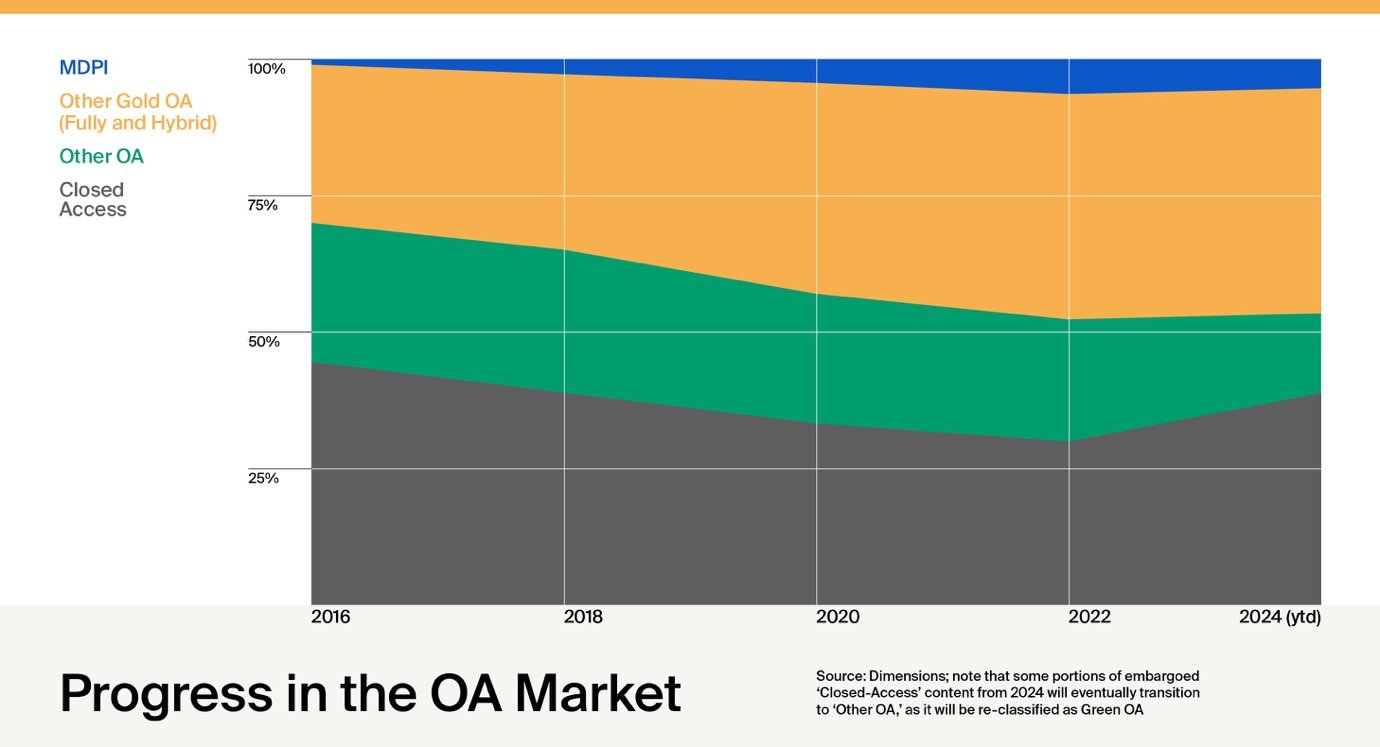
Benefits of Open Access and Open Research
- Accelerated Discoveries: OA speeds up scientific progress by allowing immediate access to findings, enabling researchers to build on each other’s work faster.
- Community-Led Innovation: Open research empowers communities to manage their own platforms, creating collaboration and shared knowledge.
- Increased Visibility: OA broadens the reach of your research, leading to greater recognition, collaboration, and impact.
- Cross-Disciplinary Connections: By removing financial and geographical barriers, OA unites diverse fields, sparking innovation across disciplines.

MDPI Singapore Celebrates Open Access Week
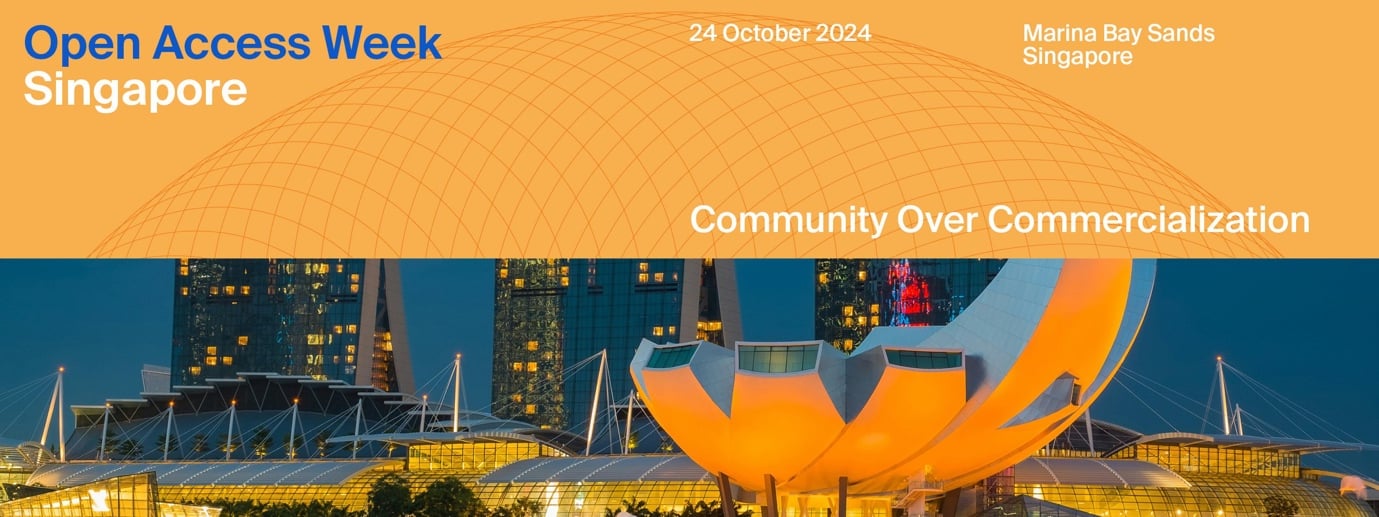
MDPI Singapore also hosted its first-ever OAW event at the Marina Bay Sands Convention Centre, bringing together academics, researchers, and students to discuss the future of open scholarship. Conversations focused on the potential of new publishing models, alternative funding strategies, and the importance of communicating research to wider audiences.
As OA evolves, MDPI remains a committed partner in advancing open science and creating a transparent, inclusive research environment. For a full recap of the week’s highlights and resources, visit our campaign page.

Impactful Research

MDPI Connection to Nobel-Winning Protein Research
David Baker, an American biochemist, and Demis Hassabis and John M. Jumper, two scientists from Google DeepMind, have been awarded the 2024 Nobel Prize in Chemistry for their groundbreaking advancements in better understanding the structure of proteins, the molecular engines of life’s processes.
One half of the prize was awarded to Professor David Baker from the University of Washington for his development of revolutionary protein design software enabling the creation of novel proteins for vaccines, nanomaterials, and sensors. Prof. Baker co-authored a 2016 paper in MDPI’s Toxins journal on protein-based therapeutics.
Meanwhile, DeepMind’s Demis Hassabis and John M. Jumper received recognition for AlphaFold, the AI model that predicts protein structures from amino acid sequences, fulfilling a long-held scientific dream.
“We congratulate this year’s Nobel laureates for their groundbreaking contributions to the study of life”
Nobel Prize Laureates Entrust MDPI with Their Research
As at October 2024, 45 Nobel laureates had contributed to more than 115 articles across
35 MDPI journals. The privilege of hosting the research of such contributors, who significantly influence the open access movement, resonates deeply with our editorial teams.
We are proud to list the names of Pierre Agostini, Hiroshi Amano, Werner Arber, Aaron Ciechanover, Robert H. Grubbs, Oliver Hart, Gerard ‘t Hooft, Michael Houghton, Harald zur Hausen, Katalin Karikó, Jean-Marie Lehn, Gérard Mourou, Ferid Murad, Shuji Nakamura, William Nordhaus, Kostya S. Novoselov, Giorgio Parisi, Charles M. Rice, Alvin E. Roth, Donna Strickland, K. Barry Sharpless, George F. Smoot, Anne L’Huillier, Drew Weissman, Kurt Wüthrich, Ada Yonath, Tomas Lindahl, Thomas C. Südhof, Stanley B. Prusiner, Roger Kornberg, Robert F. Engle, Richard J. Roberts, Ōmura Satoshi, Kenneth J. Arrow, John B. Goodenough, Jennifer Doudna, Hamilton Othanel Smith, Eric R. Kandel, Carlo Rubbia, Bernard Feringa, Barry J. Marshall, Anthony J. Leggett, Andrew Victor Schally, and David Baker.
Notable MRNA Published in Cells
On 7 October 2024, the 2024 Nobel Prize in Physiology or Medicine was jointly awarded to Victor Ambros and Gary Ruvkun for the discovery of microRNA and its role in post-transcriptional gene regulation.
MicroRNAs are proving to be fundamentally important for how organisms develop and function. Some interesting papers about microRNA research are published in the MDPI journal Cells. I invite you browse through the notable papers related to microRNA research in Cells.
Inside MDPI
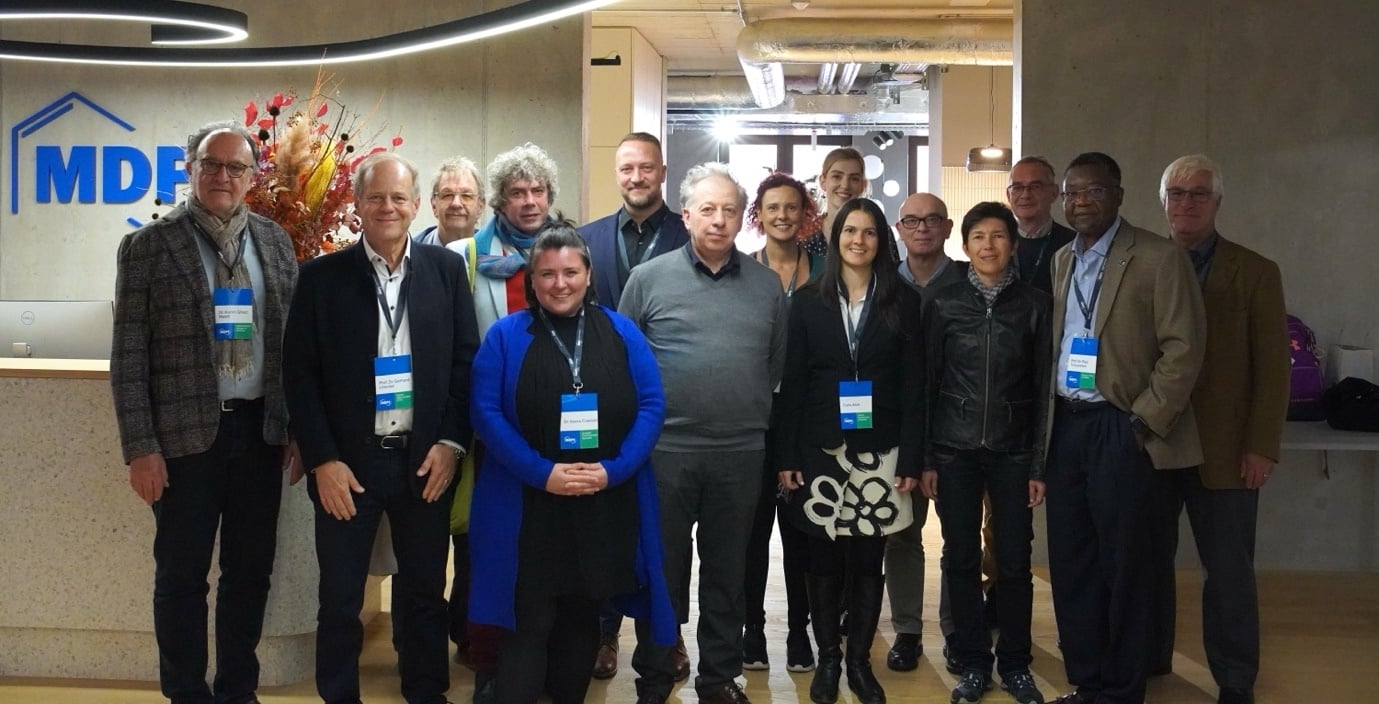
Basel Open Day
On 21 October, we held the Basel Open Day at our headquarters, welcoming a group of journal Editors-in-Chief (EiC) and Editorial Board Members (EBMs) for a full-day workshop. The event featured presentations and discussions on MDPI’s latest editorial updates, data integrity policies, society collaborations, and local market insights.
The following MDPI journals were represented during the visit: Physics, Journal of Personalized Medicine (JPM), Sci, Remote Sensing, Animals, Cells, Buildings, Histories, Sensors, and International Journal of Environmental Research and Public Health (IJERPH).
This was a great opportunity to showcase our new office space while gathering feedback from leading journal stakeholders. To get everyone on the same page, we took 60 minutes for round-table introductions, which helped set a collaborative tone and ground us in MDPI’s mission of disseminating open science.
“This was a great opportunity to gather feedback from leading journal stakeholders”
The general feedback from the day highlighted positive developments around our editorial and ethics policies, as well as areas for improvement, including flexibility regarding reviewer deadlines. There was a genuine appreciation and push for our ongoing efforts to share more about MDPI, including company updates and promoting high-quality research through our blog, announcements, and social media channels, which we have been growing and expanding.
Our Basel Open Day was a positive experience, bringing together key journal stakeholders and gathering insights to guide MDPI’s continued engagement with the academic community. We look forward to hosting future events of this kind and welcoming more scholars to our headquarters in Basel, Switzerland.
Coming Together for Science

ncRNA 2024 Conference in Basel
I am pleased to share that we held Non-coding RNA World 2024: Exploring Mechanisms, Designing Medicines (ICM 2024) in Basel, Switzerland this past 7–9 October.
The three-day event attracted just over 100 attendees, including two Chairs, 10 invited speakers and two keynotes from Prof. Mauro Giacca and Prof. Ling-Ling Chen. Of the presentations on site, there were 35 posters and 44 oral presentations.
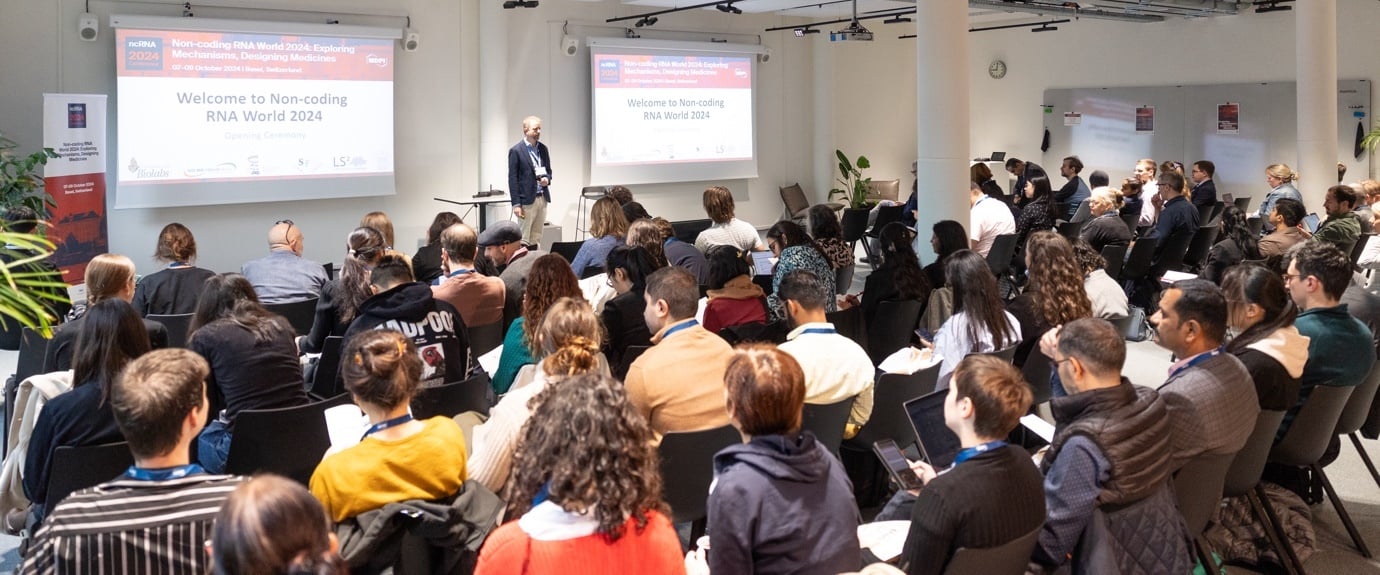
The overall feedback was positive, with people enjoying the intimate event and the unique activities offered, including a guided tour around Basel’s Old Town (a must-see for anyone visiting the city) and a memorable conference dinner.
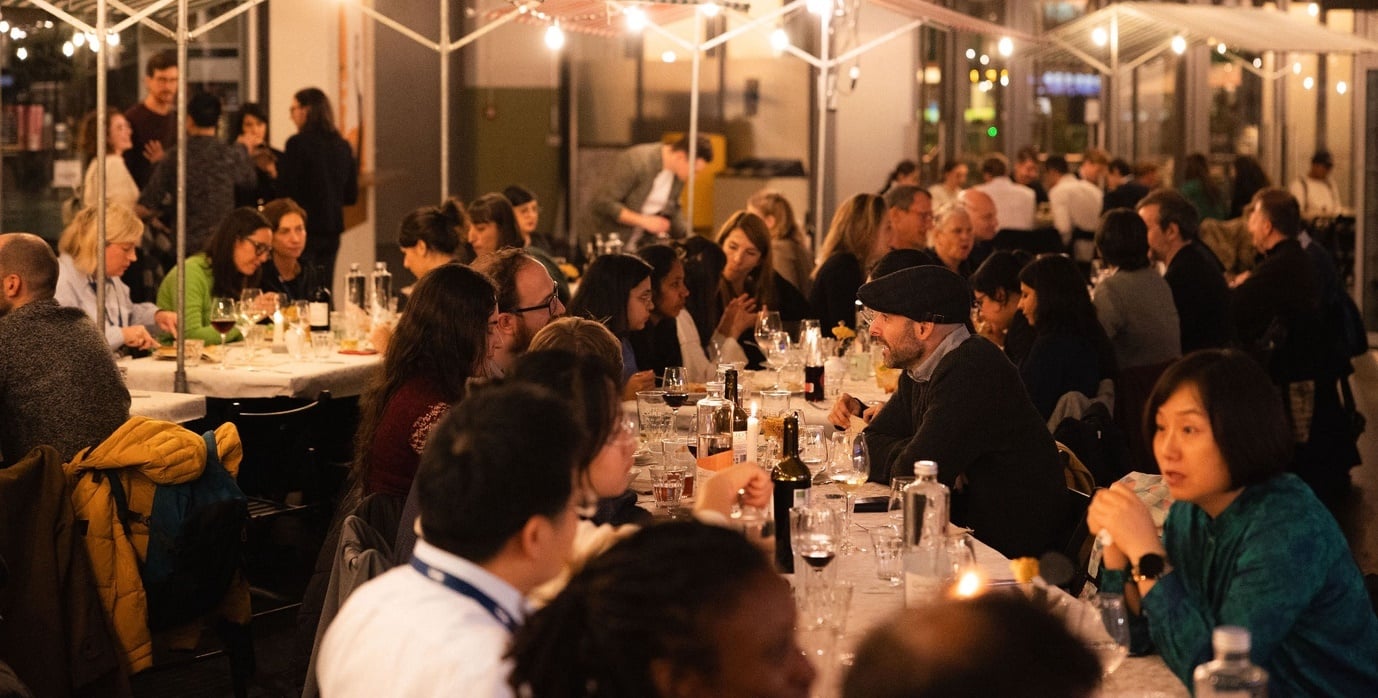
It was cool to see the winners of the 2024 Nobel Prize in Physiology or Medicine announced during the conference days. This was exciting for attendees, as the winners discovered a new class of RNA molecules (miRNAs). As one invited speaker put it, “It's exciting to be among fellows when something that important for the field is announced.”
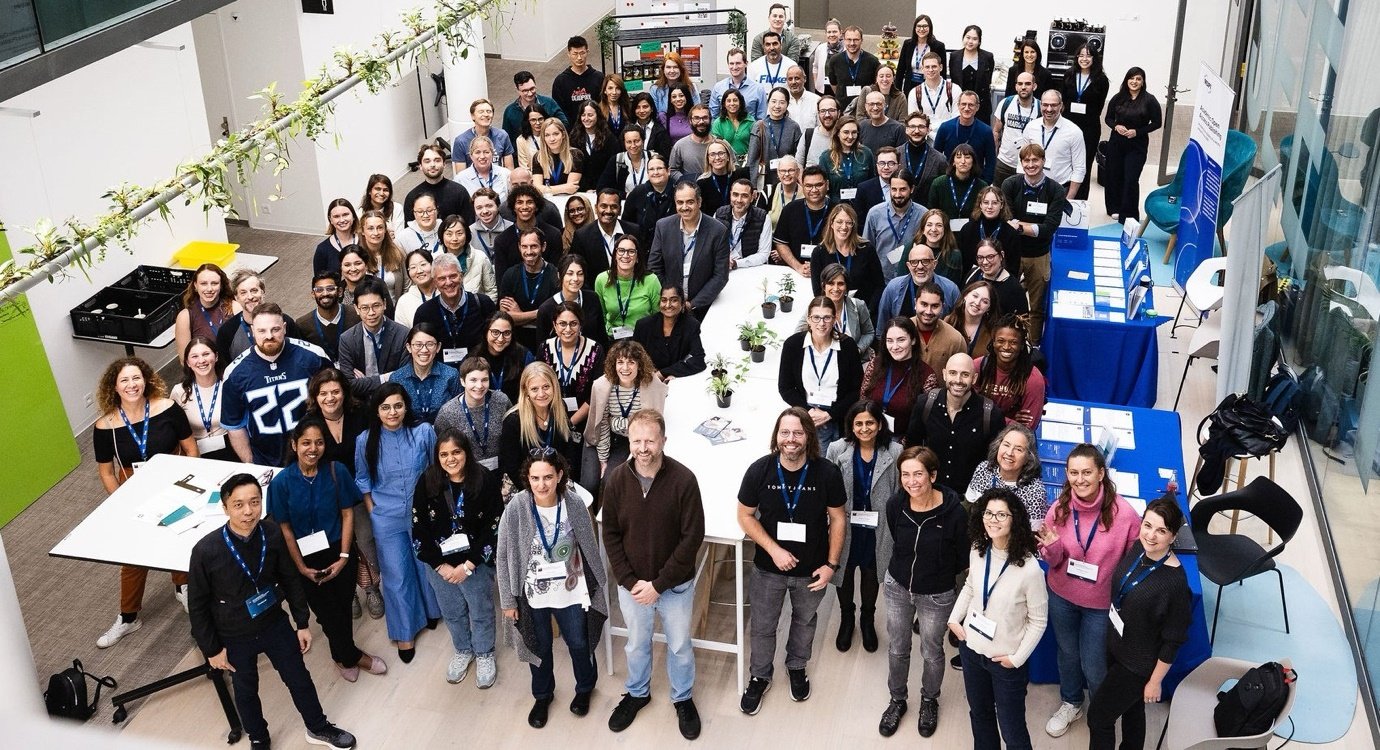
“It's exciting to be among fellows when something that important for the field is announced”
Every attendee receives a conference survey, and I’m always pleased to see a high percentage of ‘Very Satisfied’ responses when asked about ‘treatment from conference personnel’. Kudos to our conference team for meeting our attendees’ needs. These events are a great opportunity for us to reach new audiences, as 92% of the respondents had never been to an MDPI conference, so I am thrilled to see us connecting with a new demographic of your researchers in the RNA field.

A special thank-you to our partnering societies The Epigenetics Society, The French Society of Genetics, LS2 / USGEB (Union of Swiss Societies for Experimental Biology), and The RNA Biology Group, as well as to our sponsors New England Biolabs and Arraystar for their support of the ncRNA 2024 conference. I am also pleased to report that we presented two awards, including the Best Presentation Award and two Best Poster Award, recognizing the contributions of our participants.
Upcoming In-Person Event
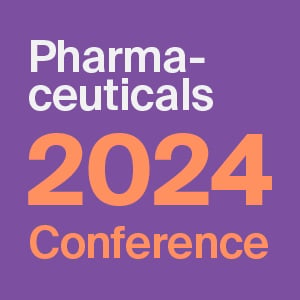
27–29 November 2024
Pharmaceuticals 2024 – Recent Advances in Pharmaceutical Sciences Towards a Healthy Life
Location: Barcelona, Spain
The discovery of new molecules, their properties, and actions to enhance human health and quality of life.
Find more upcoming MDPI events here.
Closing Thoughts
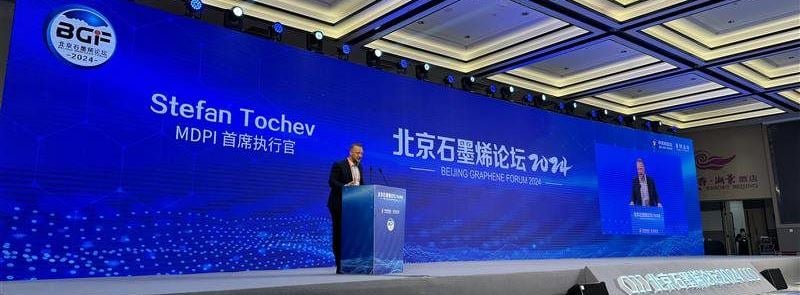
Beijing Graphene Forum 2024
I am pleased to share that we had a successful time at the Beijing Graphene Forum 2024, which drew around 1,000 attendees, including Konstantin Novoselov (2015 Nobel Prize in Physics) and other high-profile scholars in materials science and chemistry. It was a great opportunity to present MDPI on the big stage, with university presidents from institutions such as Peking University also in attendance.
I had the honour of awarding Prof. Zhongfan Liu, Chairman of the Chemical Science Committee, with a medal and presenting certificates to the members of the Chemical Science Committee; this is an important initiative to help expand MDPI’s journals and influence in China. These are highly respected scholars, and we enjoyed connecting with them over lunch as well.
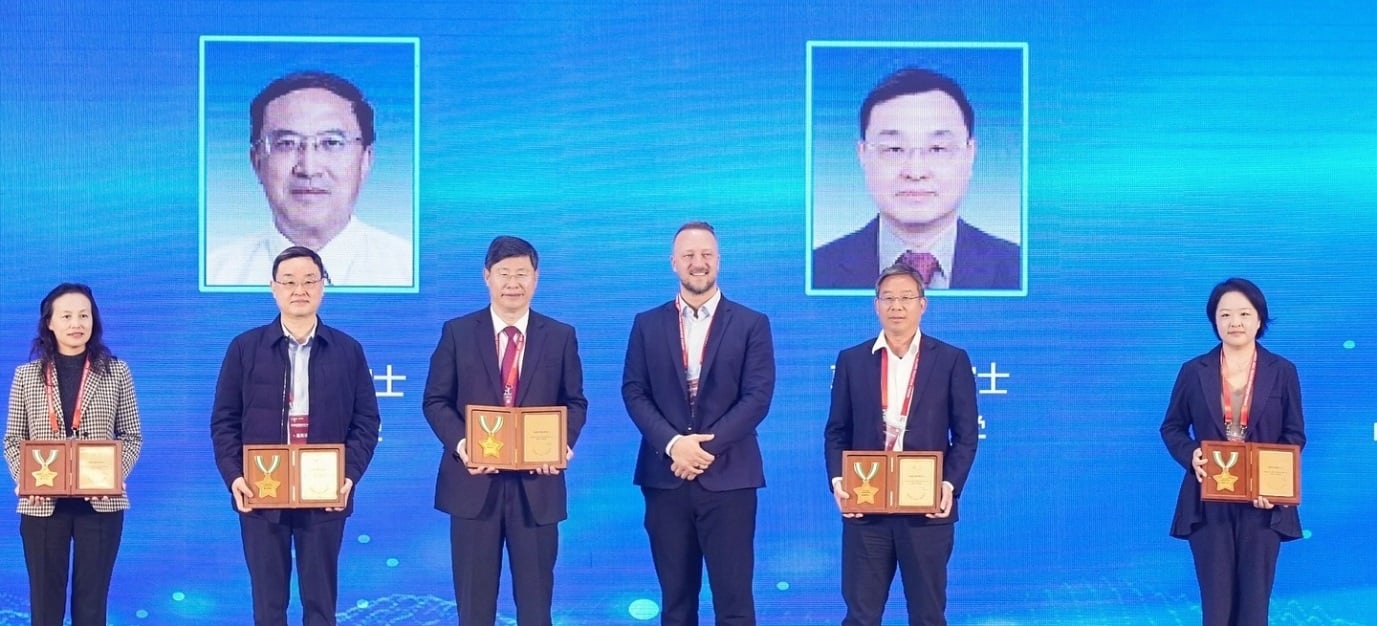
“This is an important initiative to help expand MDPI’s journals and influence in China”
I also had the chance to speak about MDPI and open access, giving a five-minute speech during the opening ceremony and a 20-minute presentation at the close. MDPI hosted a sub-forum where both academic scholars and MDPI members shared insights, and we engaged with attendees at our MDPI booth.
This was a great opportunity to spotlight MDPI as the main publishing partner for the event, and I was proud to represent us on stage. We also met with scholars to discuss topics such as their publishing needs and institutional policies, open access, impact journals, and IOAP.
Chief Executive Officer
MDPI AG






